Central nervous system (CNS) The brain
1/47
There's no tags or description
Looks like no tags are added yet.
Name | Mastery | Learn | Test | Matching | Spaced |
|---|
No study sessions yet.
48 Terms
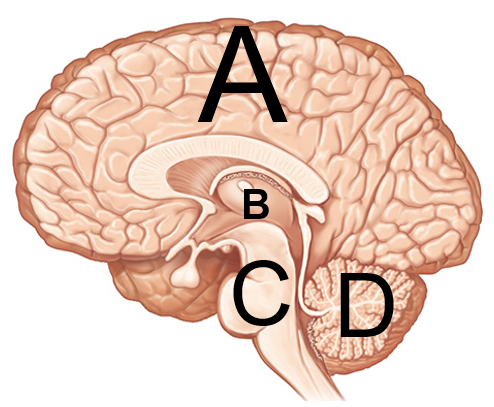
Which is the cerebrum & what is it?
A
largest region & occupies most of the space
split into 2 cerebral hemispheres (left & right) & each is made up of lobes
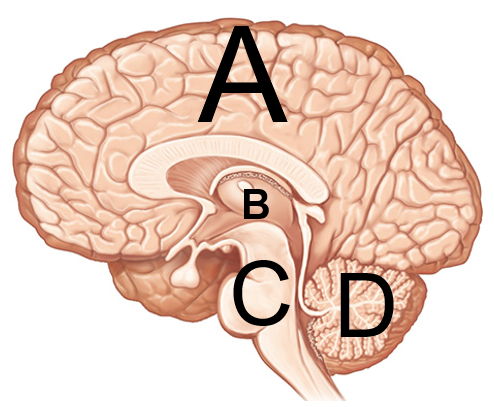
which is the diencephalon & what is it?
B
pair of oval-shaped structures deep into cerebrum
contains multiple nuclei (deep mass of gray matter surrounded by white matter)
dubbed as the gateway to the cerebral cortex
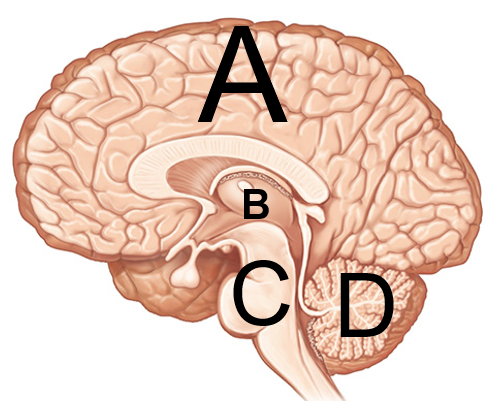
Which is the cerebellum & what is it?
D
2 largest region of the brain
located inferior to the cerebrum but posterior to the brainstem
consists of left & right cerebellar hemispheres
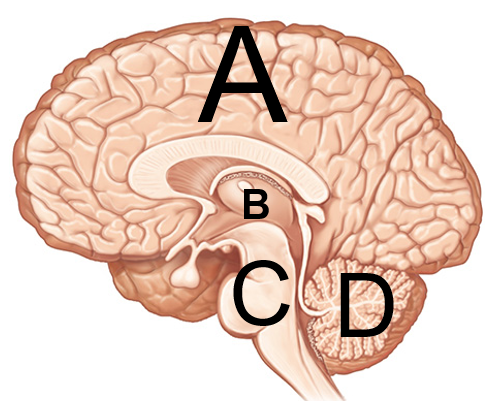
Which is the brainstem & what is it?
C
long structure that extends inferiorly from the diencephalon
10 out of the 12 cranial nerves originate from here
made up of 3 parts (superior midbrain, pons, medulla oblongata)
what are the 2 cranial nerves that only originate from the cerebrum?
CN I olfactory nerve
CN II optic nerve
Fissures
deeper groves/furrows usually separating bigger arts of the brain
sulci
shallow grooves found in cerebrum
gyri
fold found in cerebrum (think of a gyro sandwich which is folded)
what are gray matter composed of?
neuron cell bodies
dendrites
synapses
what is white matter mainly composed of?
bundles of axons/tracts
the brain & spinal cord are surrounded by a set of 3 connective tissue membranes knows as what?
meninges
what are the 3 layers from superficial to deep?
dura mater
arachnoid mater
pia mater
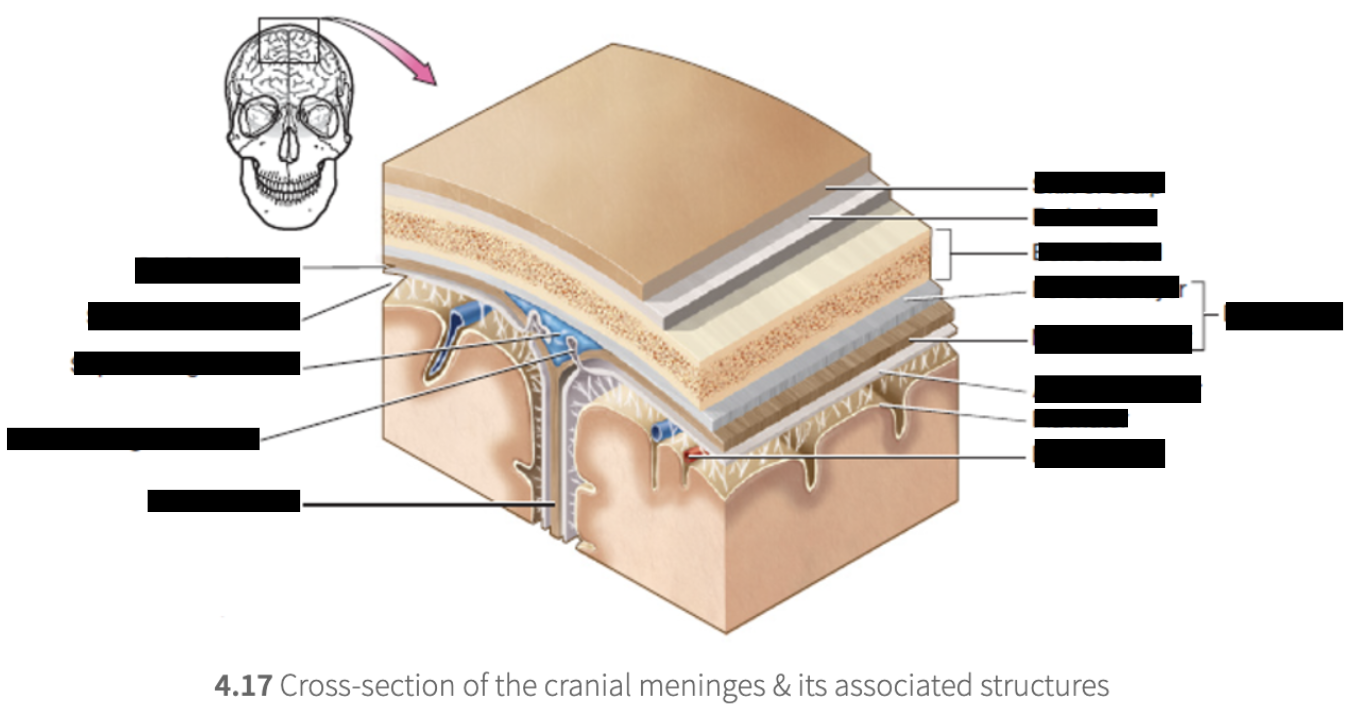
dura mater
tough layer protecting the brain; made up of 2 layer
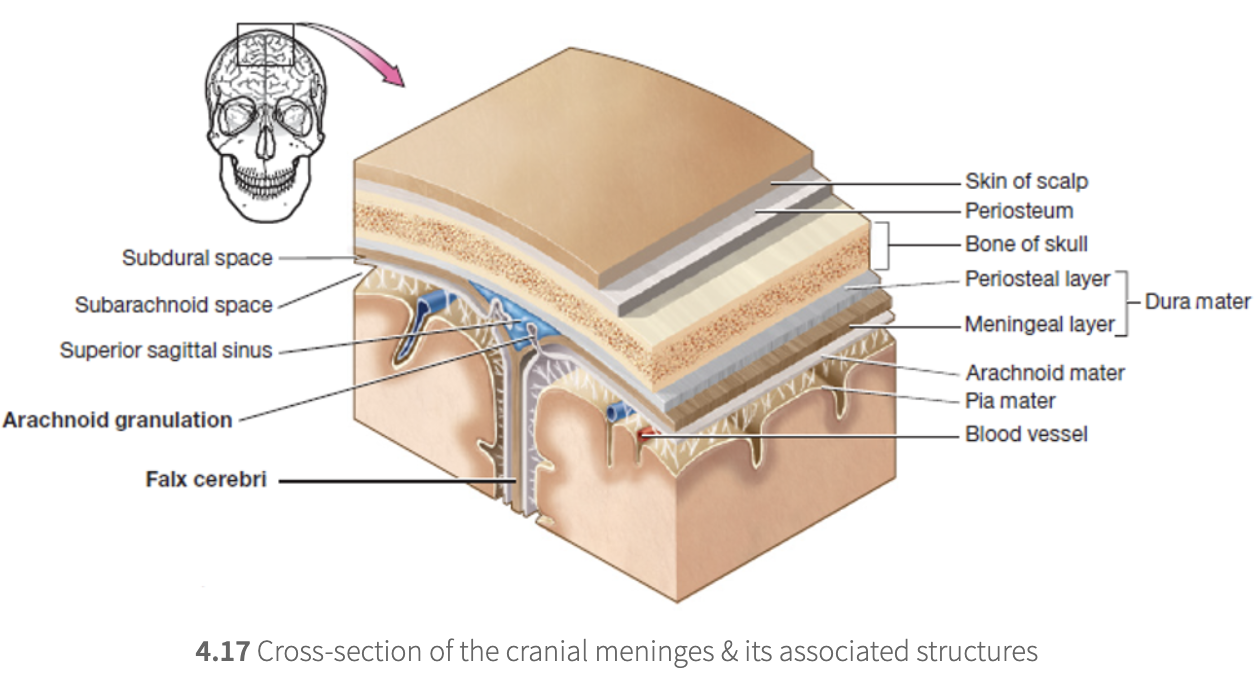
what are the 2 layers that make up the dura mater?
periosteal layer
meningeal layer

periosteal layer
outer layer surrounding the cranial bones, equivalent to periosteum


meningeal layer
inner layer facing other meninges; ONLY part of dura that extends to the vertebral canal
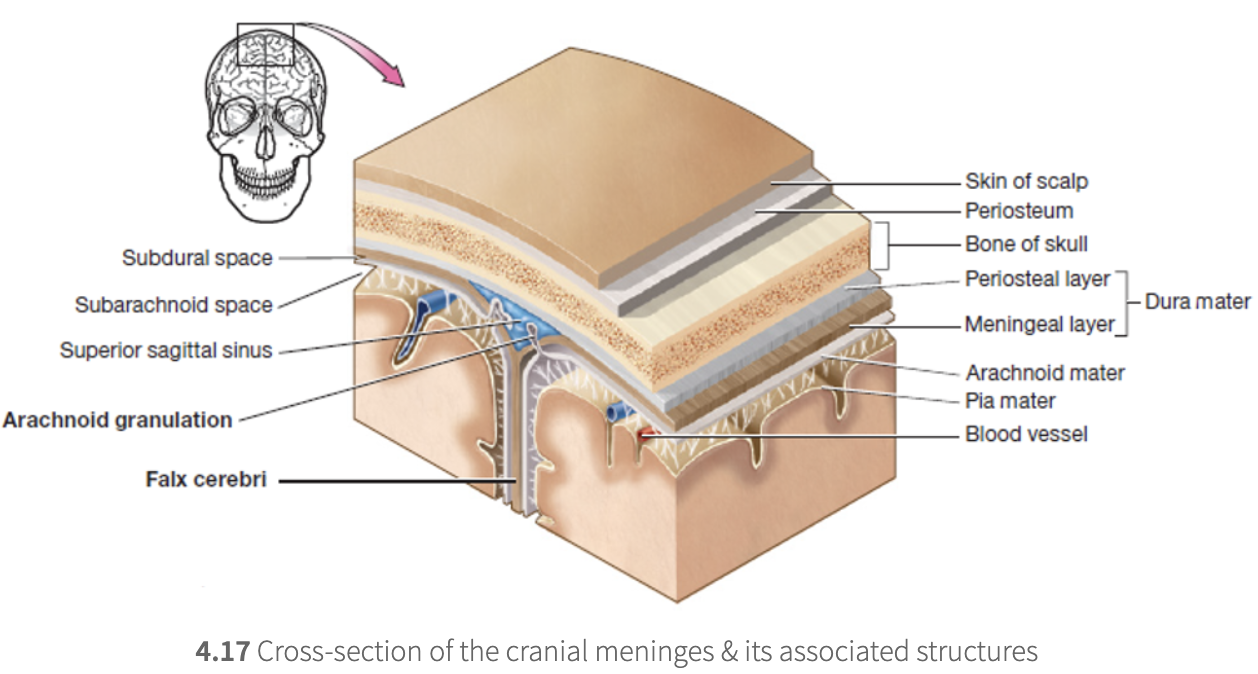
What does the meningeal layer do?
surrounds & supports the dural sinuses that drain deoxygenated blood from the brain
What are the 3 structures formed by the meningeal layer that separates parts of the brain
falx cerebri
tentorium cerebelli
falx cerebelli
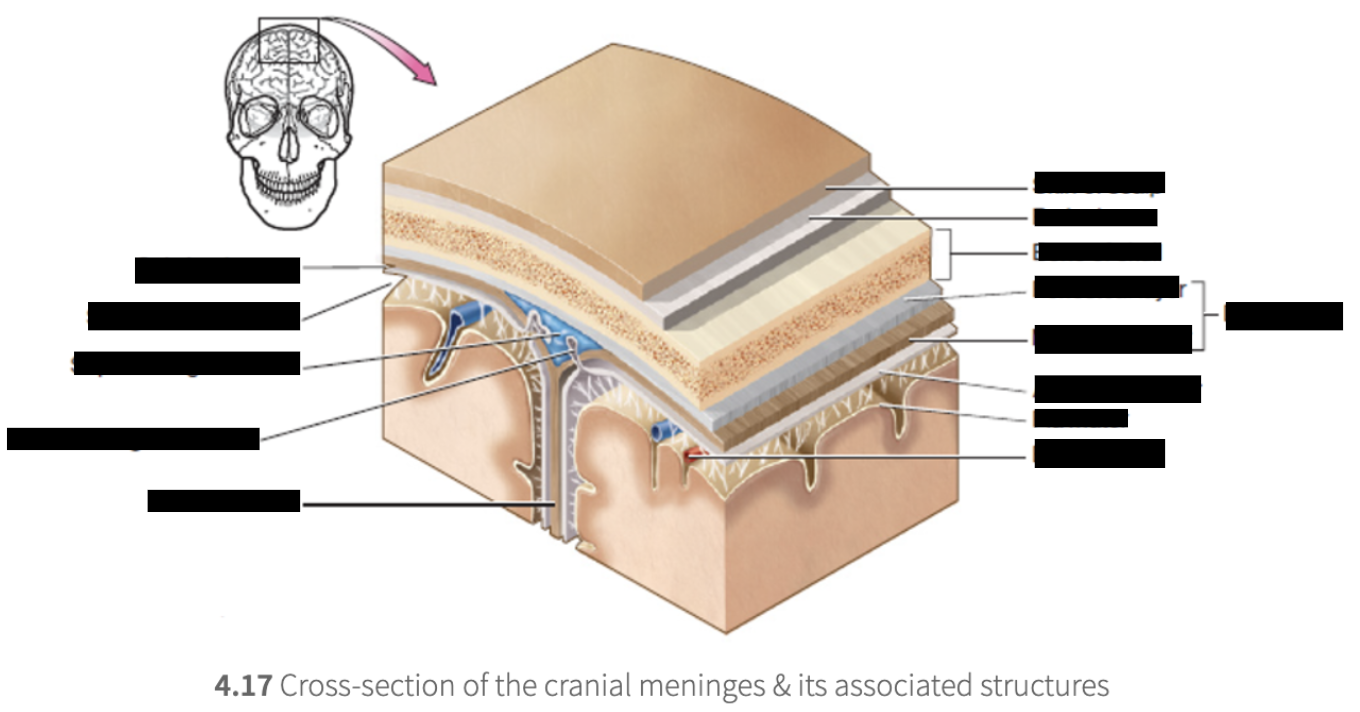
subdural space
a potential space (meaning it can be opened if needed; for issues like brain bleed)
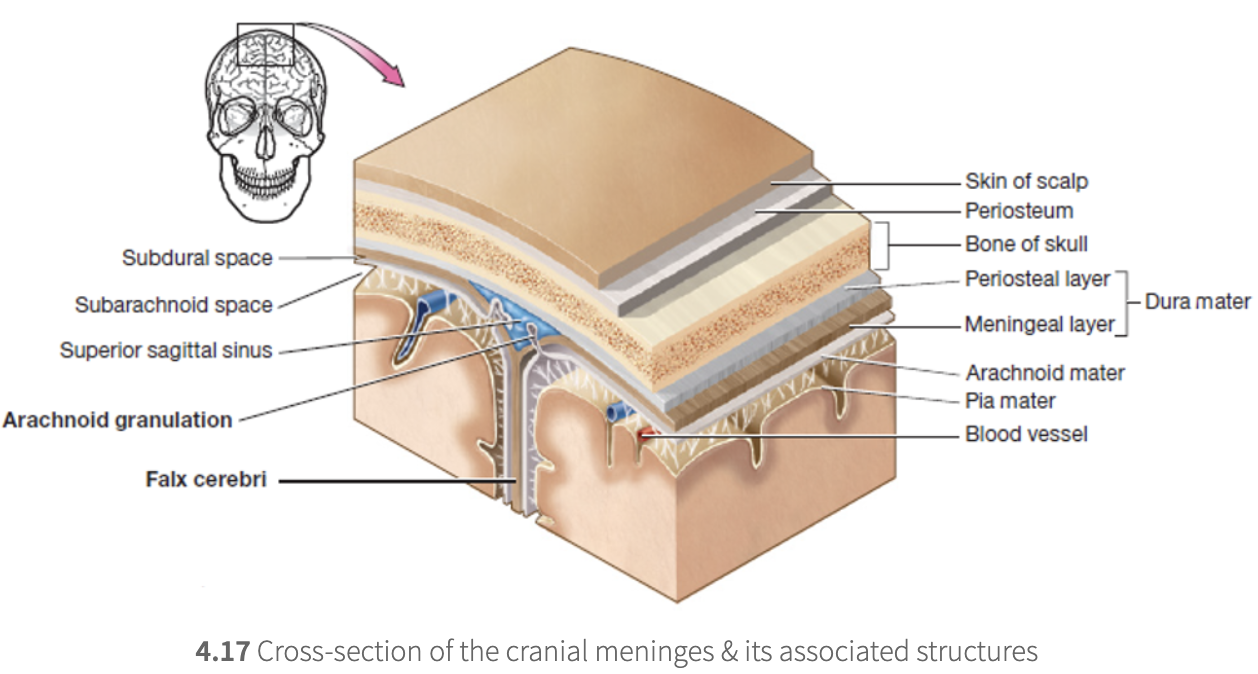
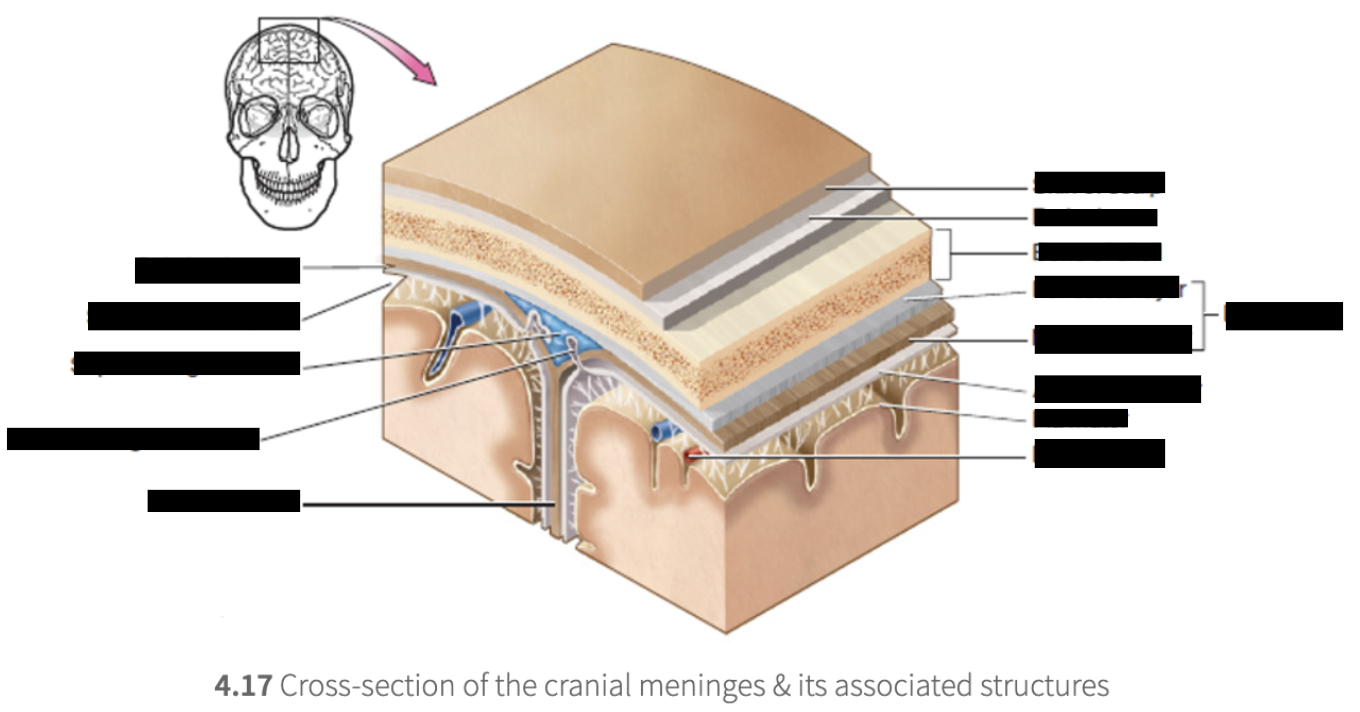
dural sinuses
spaces formed by the layers of the dura mater that collects deoxygenated blood & CSF circulated throughout the brain
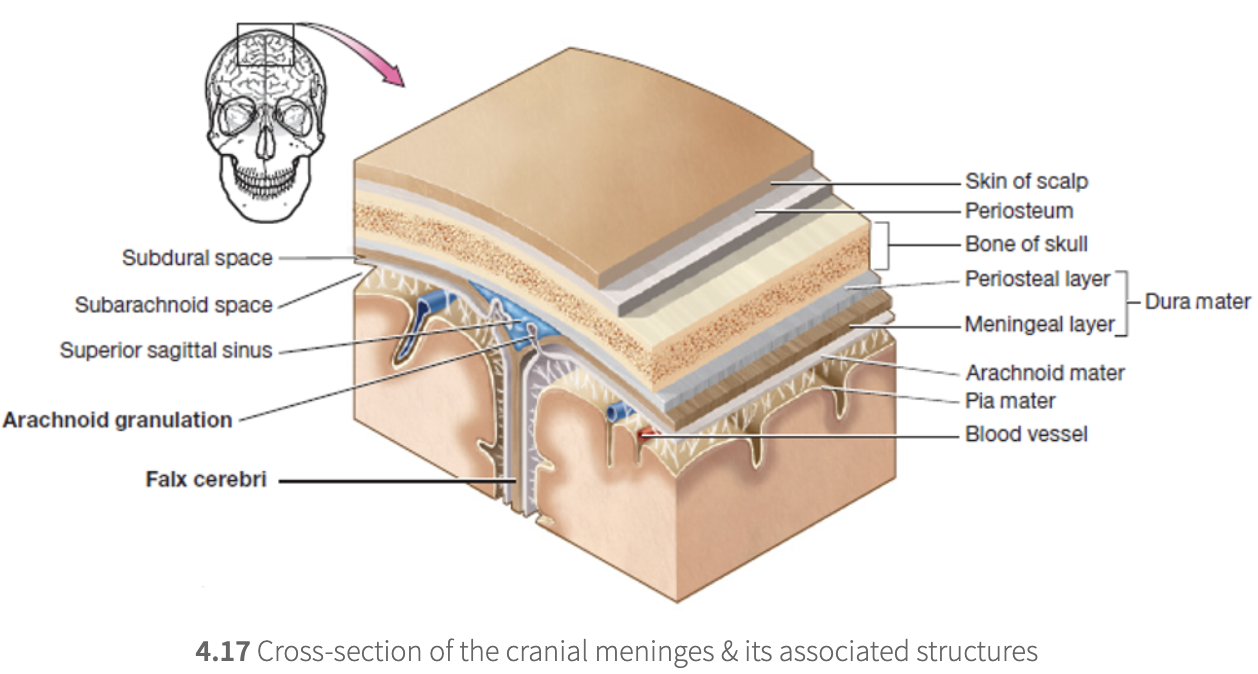
what is an example of the dural sinuses found in the brain?
superior sagittal sinus
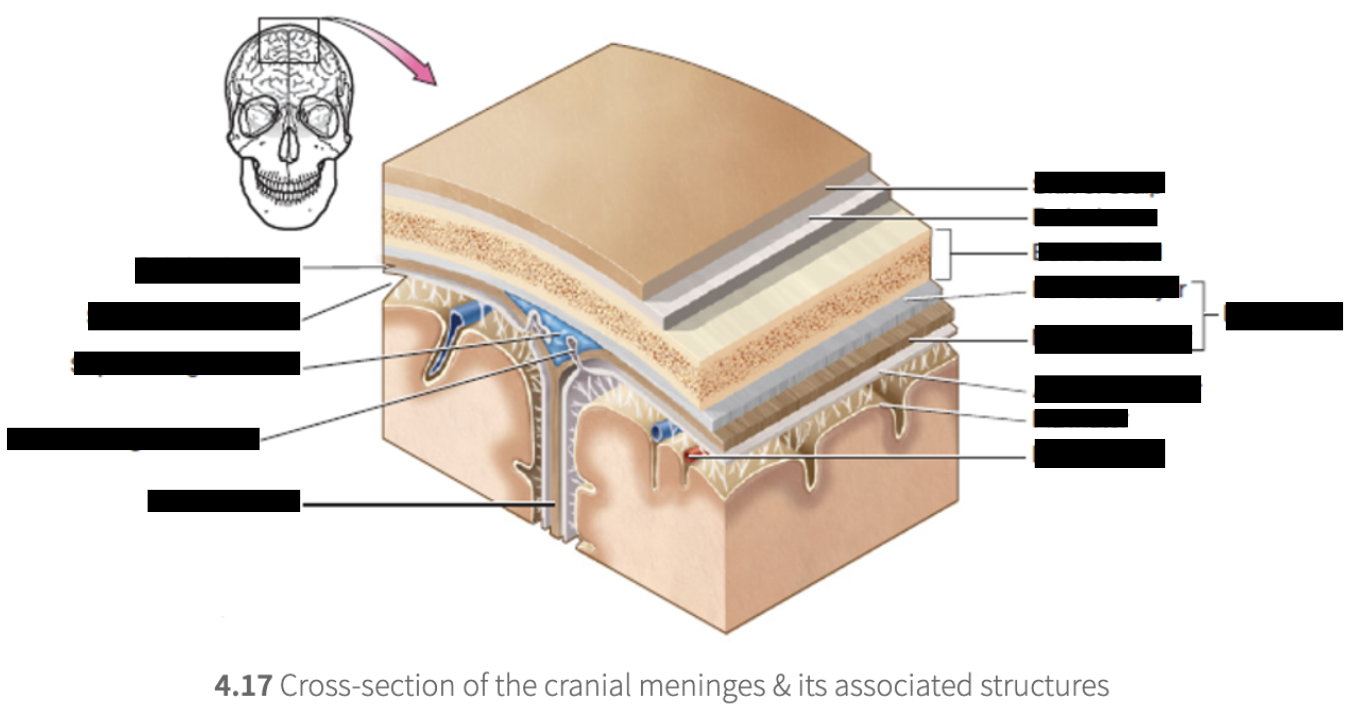
Arachnoid mater
2 layer resembling a spider web
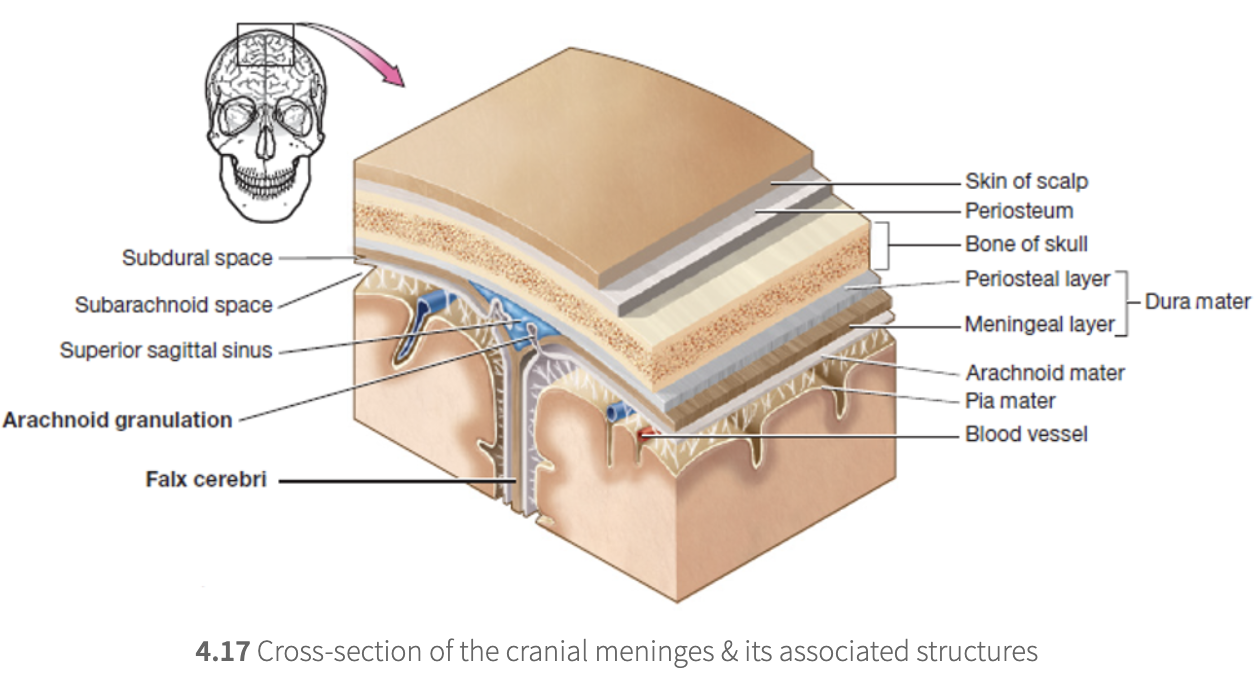
what are the small parts called on the arachnoid mater?
arachnoid granulations

arachnoid granulations
tree-like protrusions piercing through the dura mater, which reabsorbs CSF into the dural sinuses
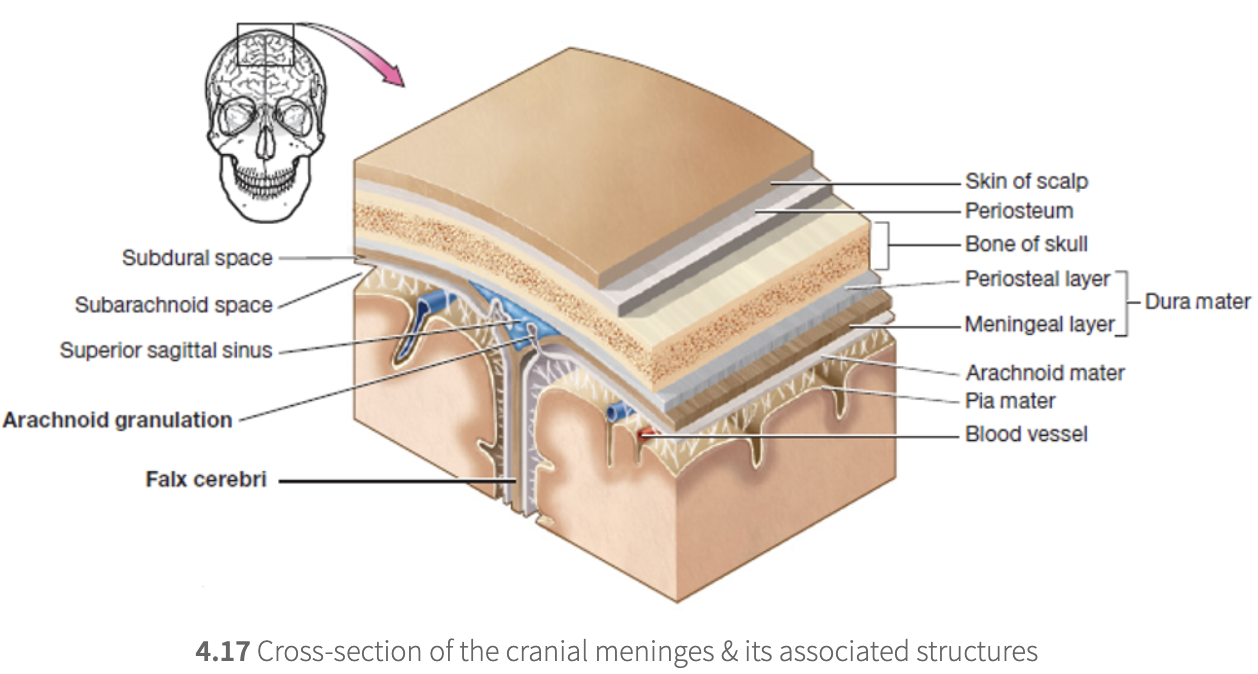
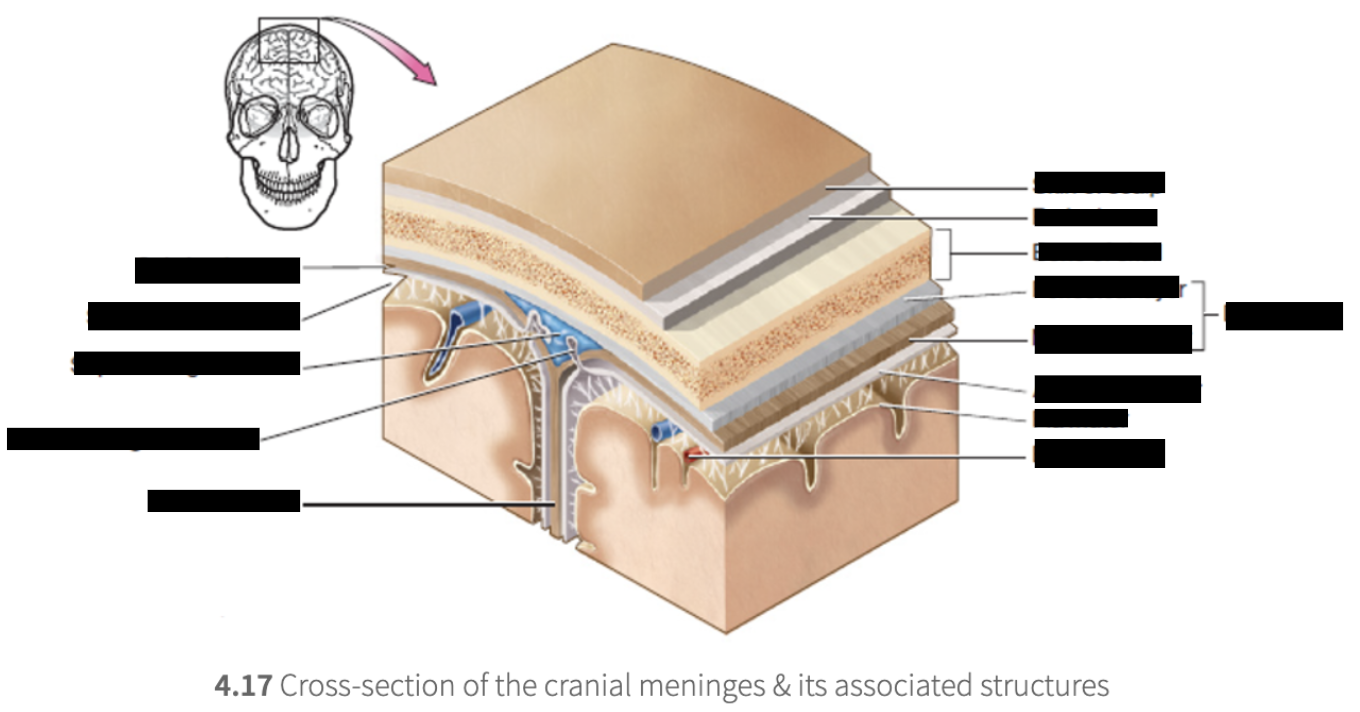
subarachnoid space
an actual space below the arachnoid mater where CSF flows
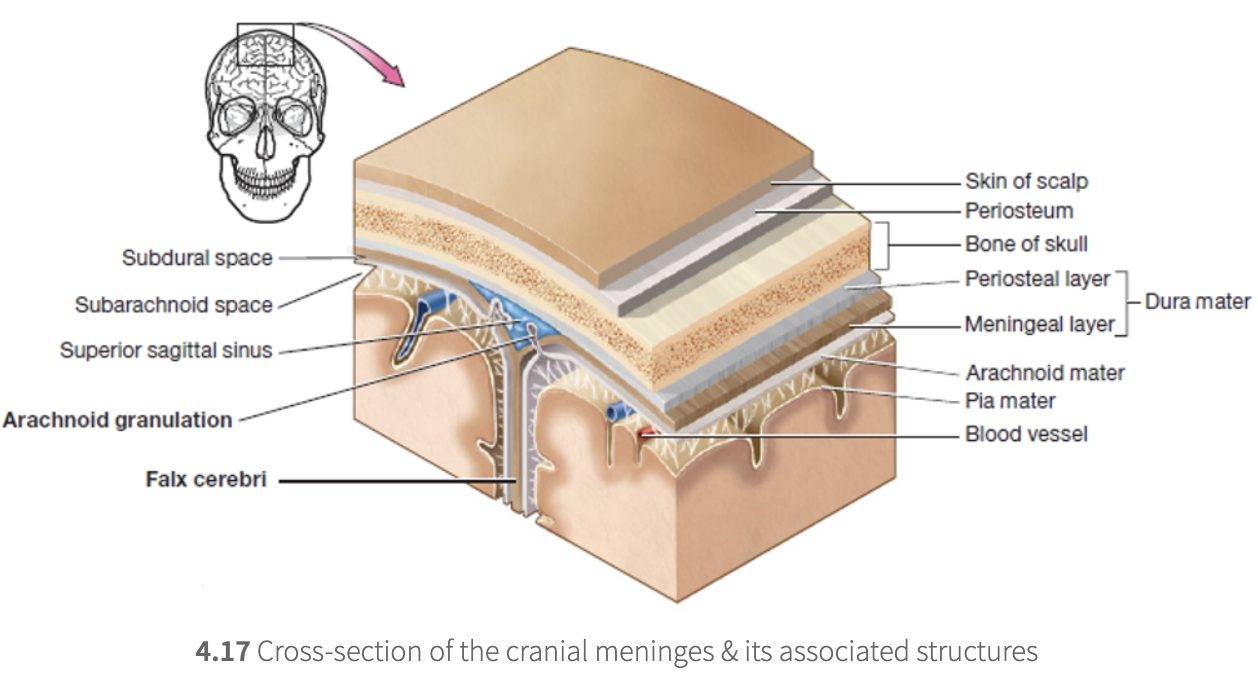
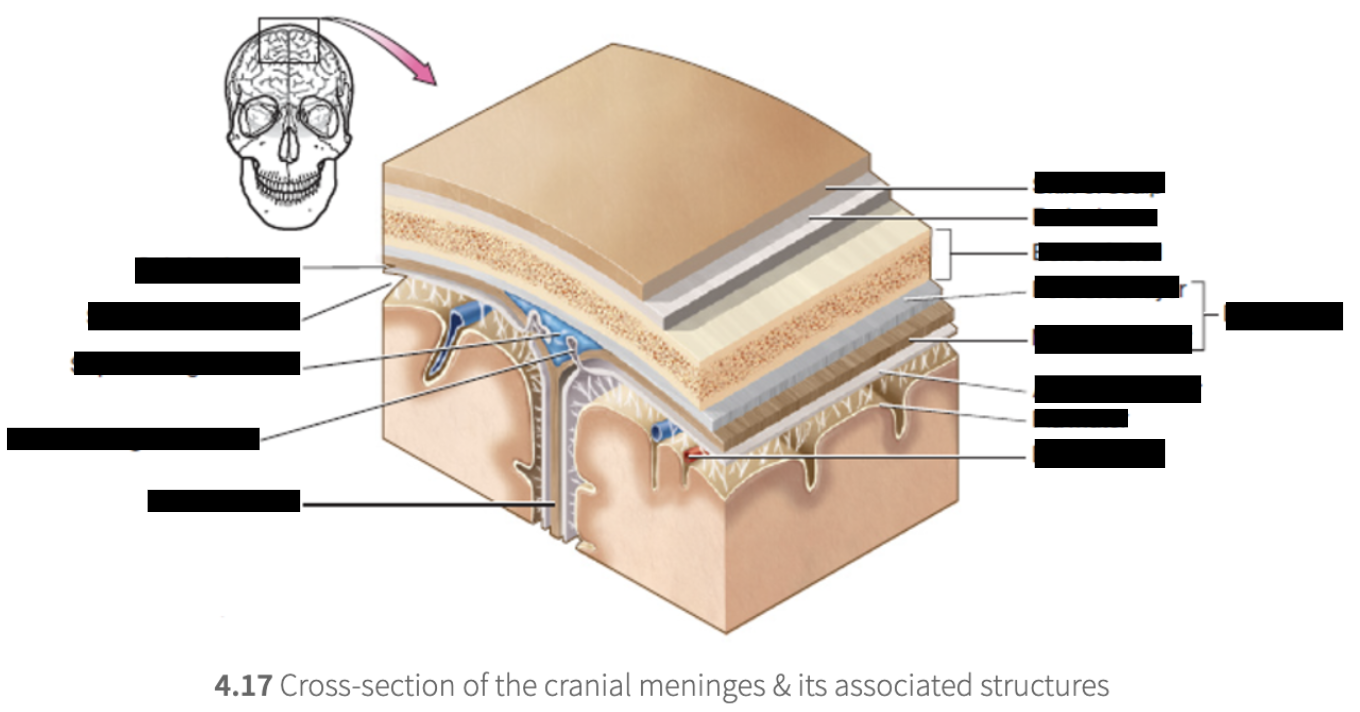
pia mater
very thin & delicate layer that closely follows every contour of the brain even the sulci

ventricles
the brain contains a system of fluid filled cavities (spaces); located in diff parts of brain
what is the ventricles lined with?
a spongy mass of capillaries called the choroid plexus
how many ventricles are there?
4 ventricles & other pathways that connect each ventricle
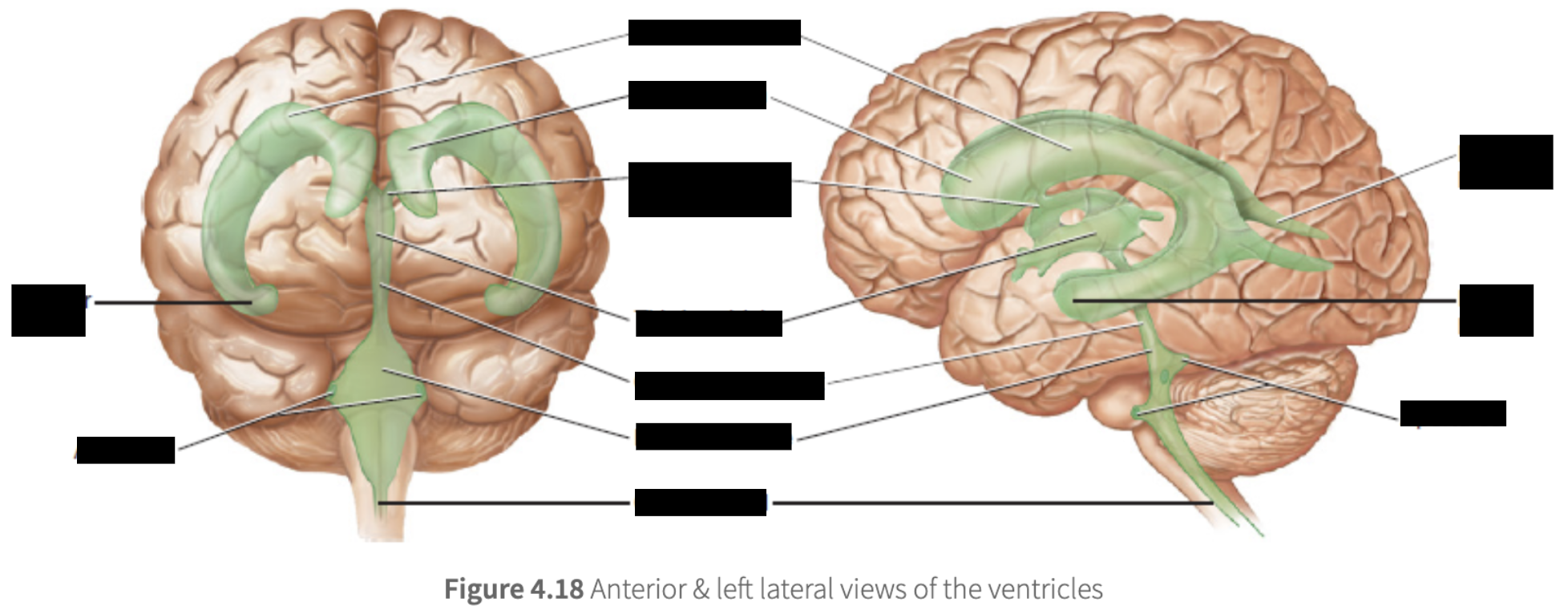
lateral ventricles (aka 1st & 2nd)
forms an arc with an anterior, posterior, inferior horns
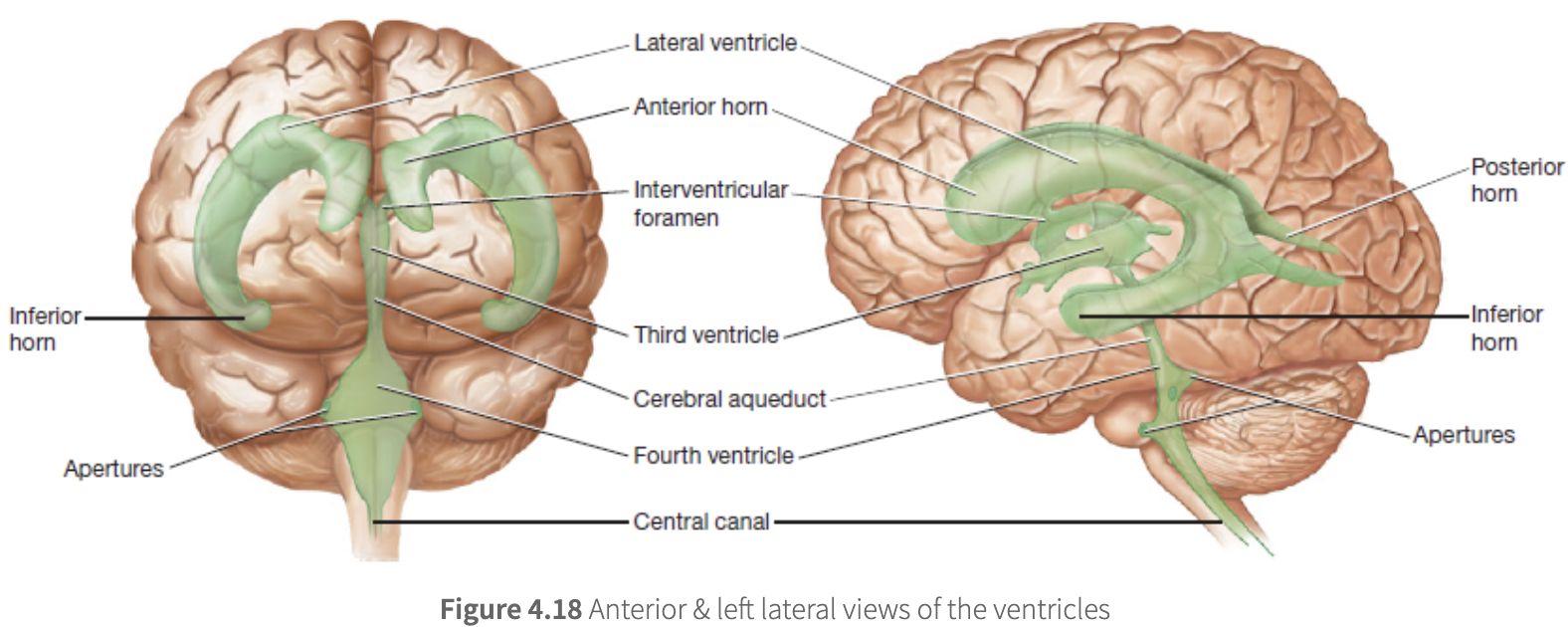
where is the lateral ventricle located?
with the left & right cerebral hemispheres
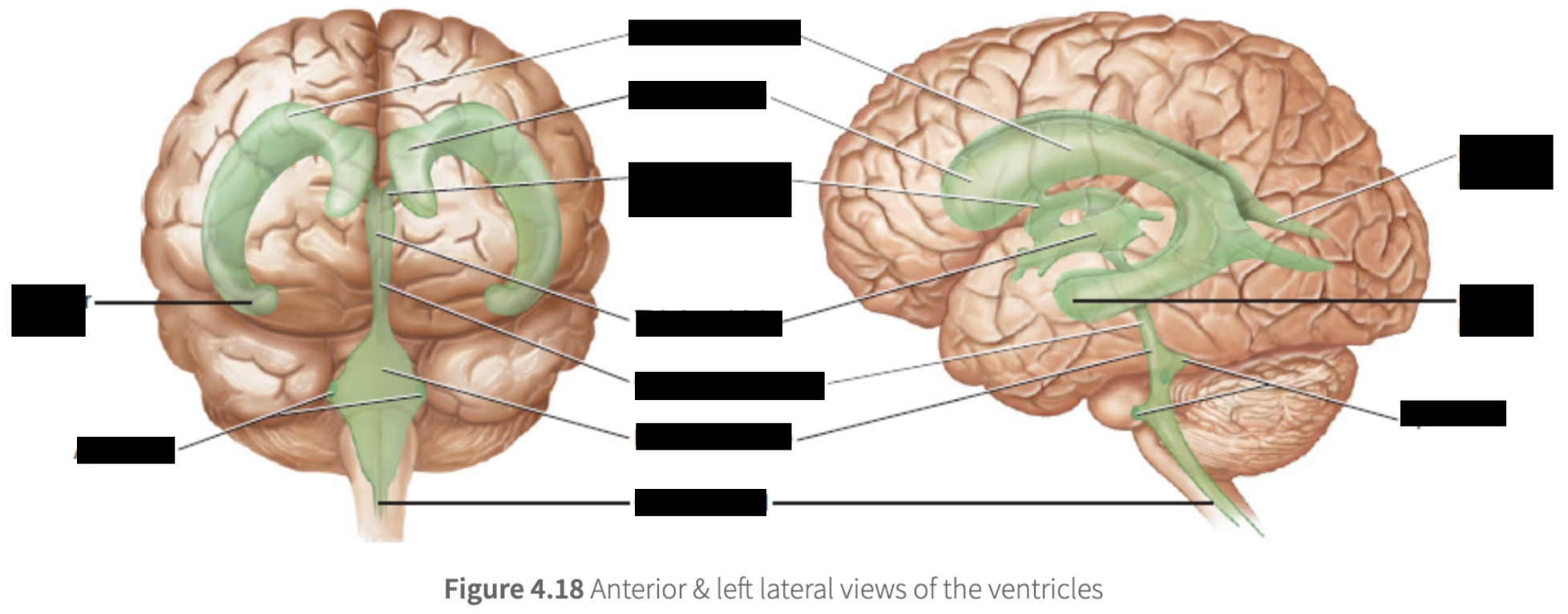
Interventricular foramen
located inferior to the anterior horns, connected the lateral ventricles to the 3rd ventricle
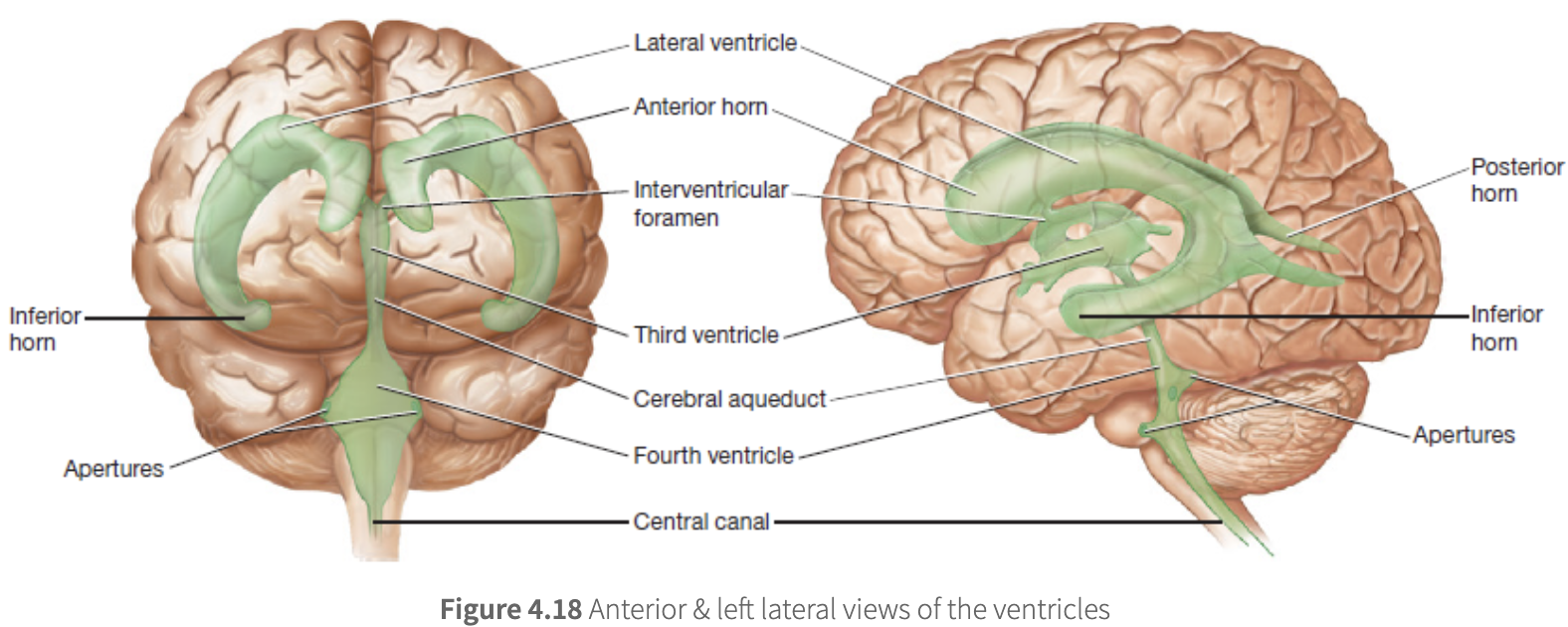
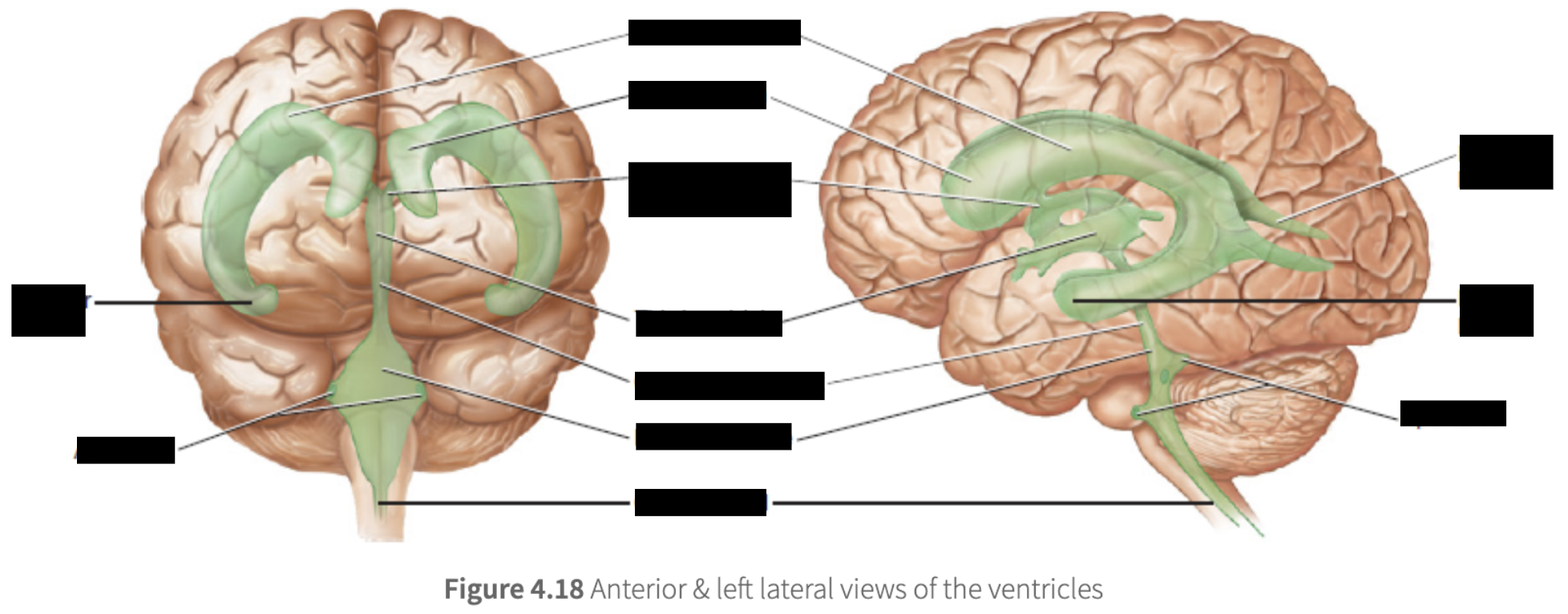
3rd ventricle
located below the corpus callous & within the medial part of the thalamus

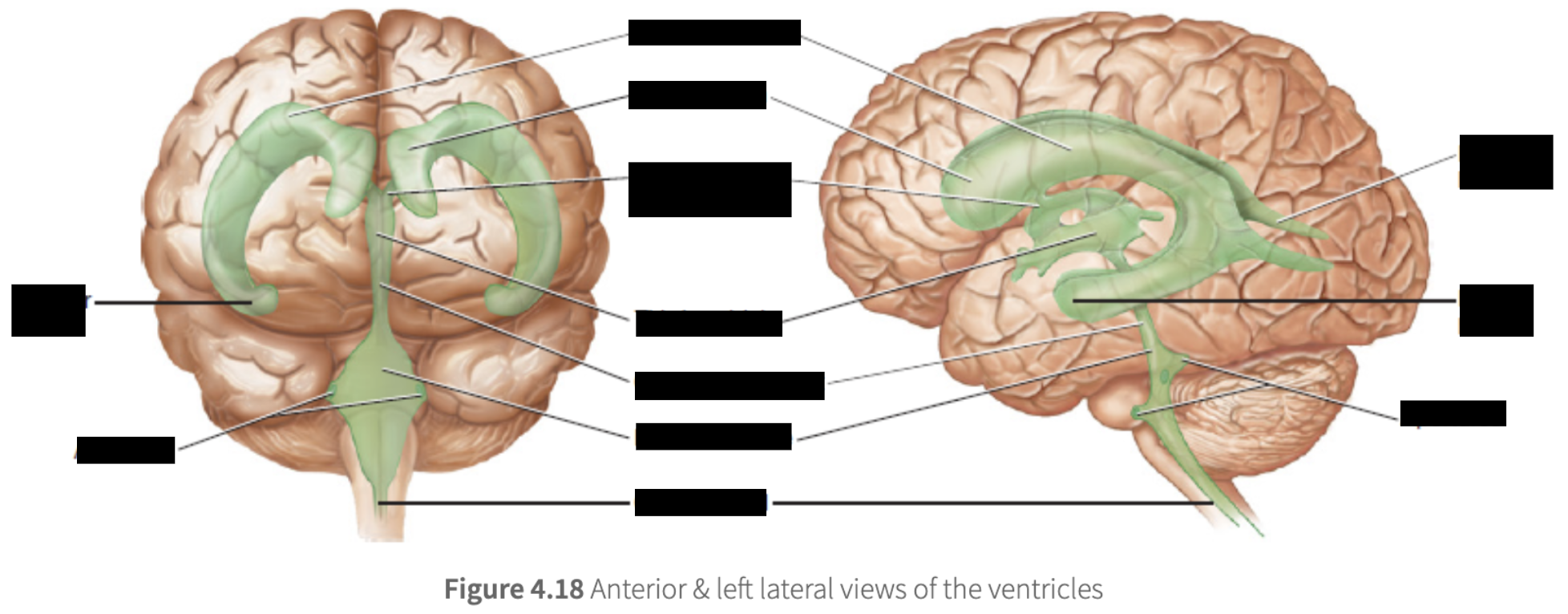
cerebral aqueduct
located in the midbrain; connects the 3rd ventricle to the 4th ventricle

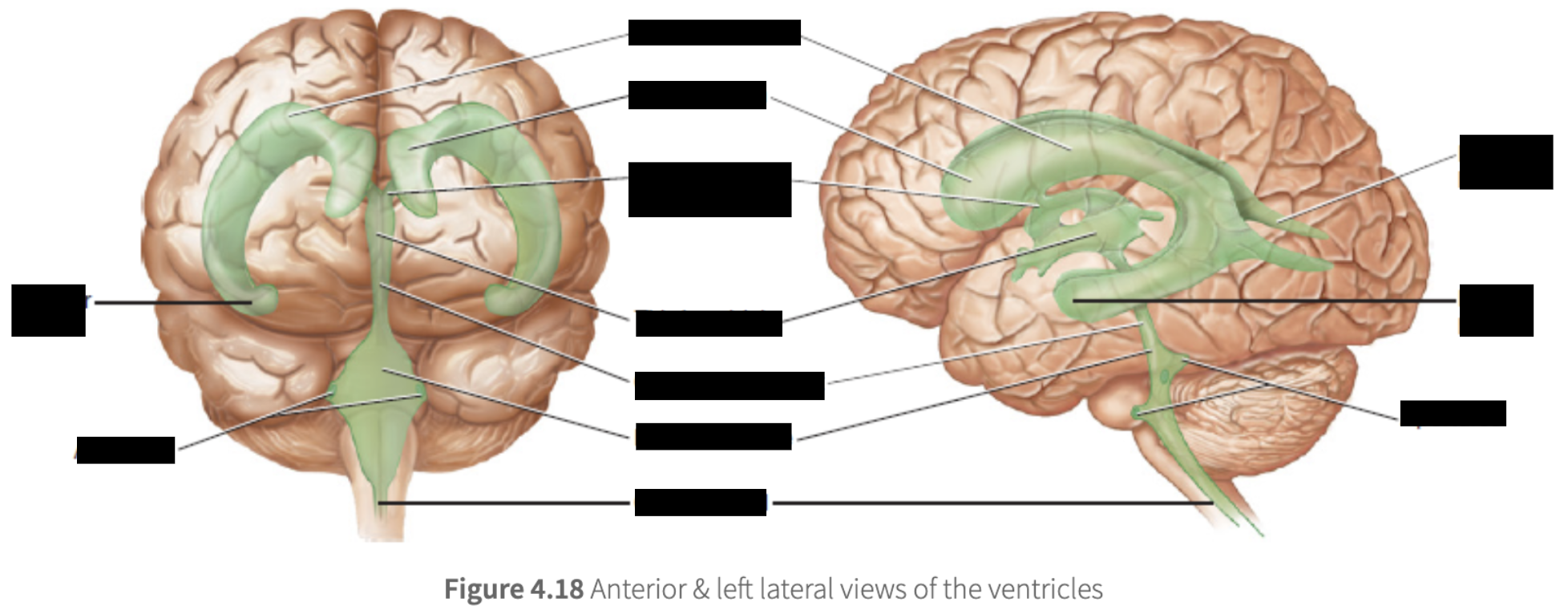
4th ventricle
located btw the pons & cerebellum
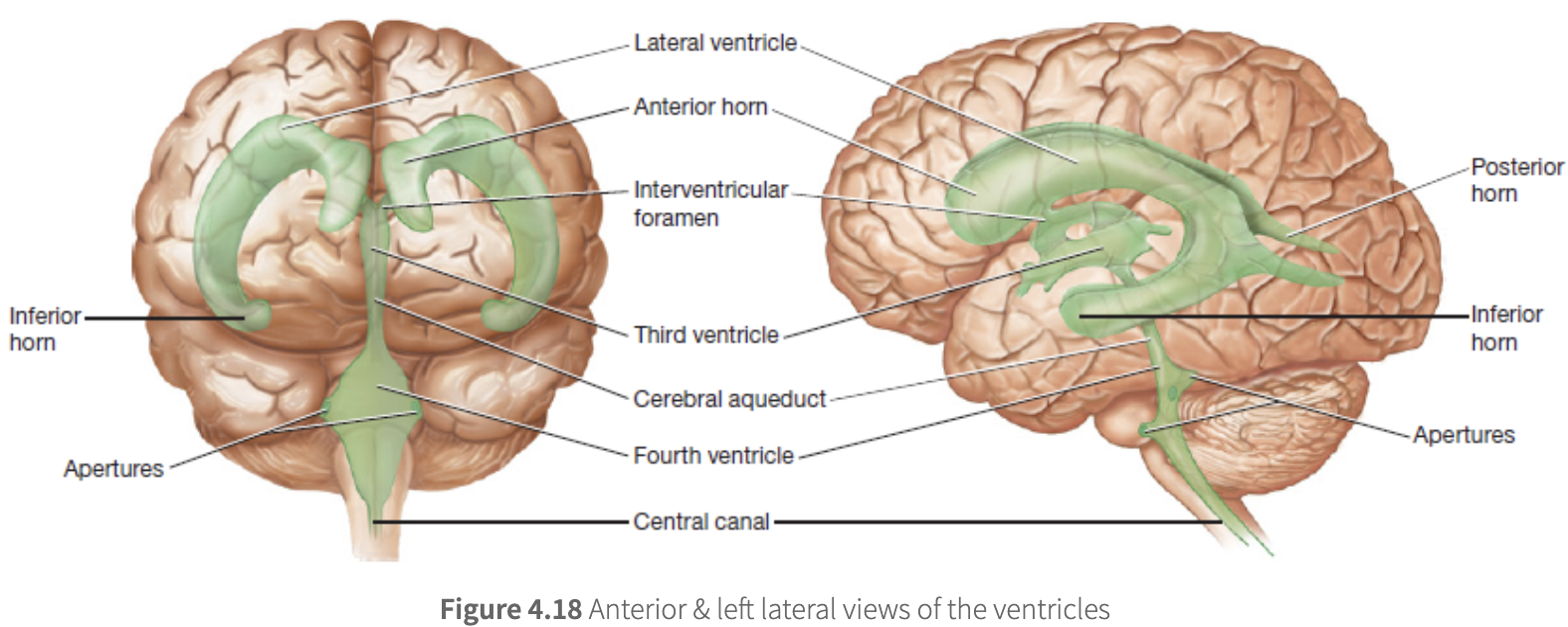

central canal & apertures
located by the medulla oblongata
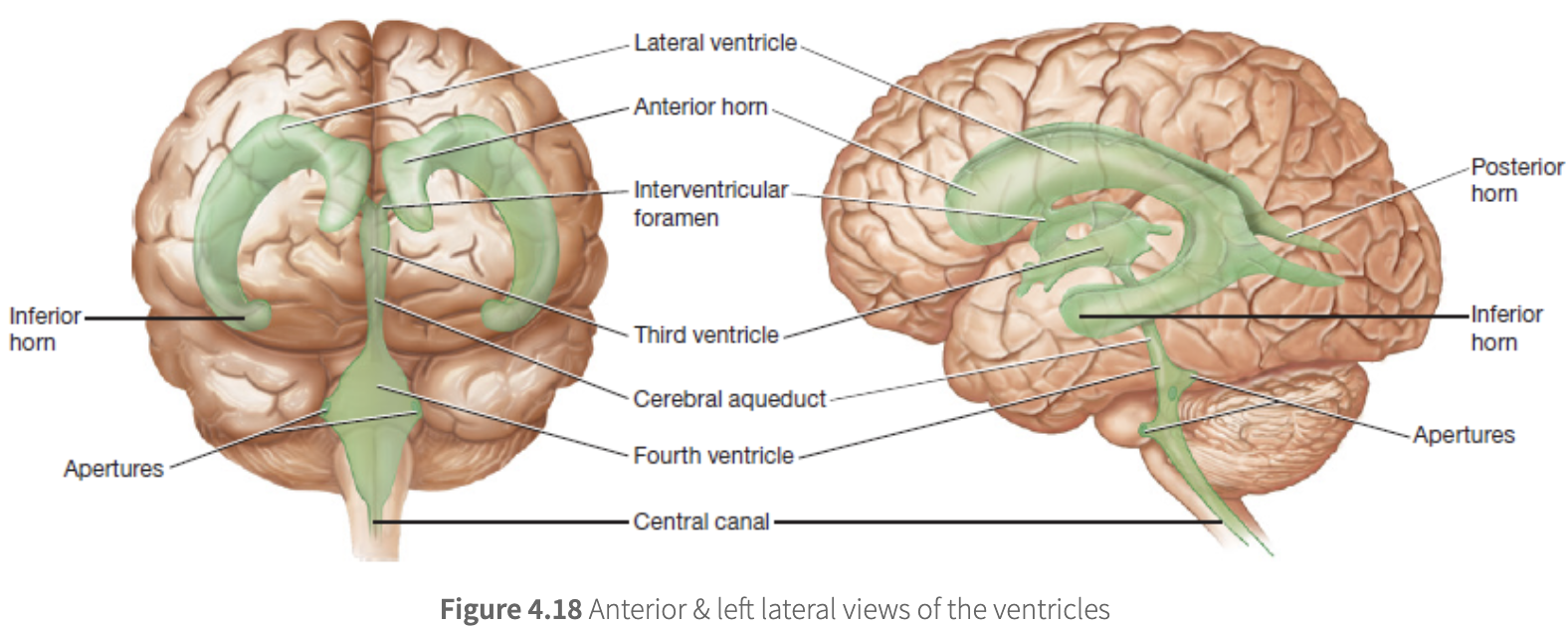
what does the central canal & apertures drain?
CSF into the subarachnoid space (actual space)
cerebrospinal fluid
clear & colorless fluid flowing in the ventricles
what is the CSF derived from?
plasma
what does the CSF protect?
serves to protect the brain by allowing it to float in the insulating fluid of the CSF
about how many CSF is produced?
500ml/day of CSF
what type of cells produces CSF?
ependymal cells lining the choroid plexus found in each ventricle & pathways
what are the 3 functions of the CSF?
buoyancy
protection
chemical stability
buoyancy
allows the brain to attain considerable size without being impaired by its own weight
protection
it protects the brain from striking the cranium when the head is jolted
what happens if the brain is jolted?
could lead to traumatic brain injuries or concussions
chemical stability
it rinses metabolic waste from the nervous tissue & regulates its chemical environment
what is the steps of the CSF flow in the ventricles?
left & right lateral ventricles
interventricular foramen
3rd ventricle
cerebral aqueduct
4th ventricle
out of the apertures & central canal
to the subarachnoid space that surrounds the brain & spinal cord
reabsorbed by arachnoid granulations into the dural sinuses